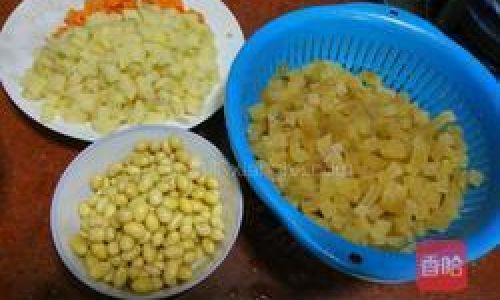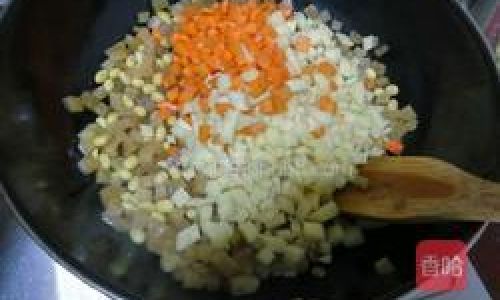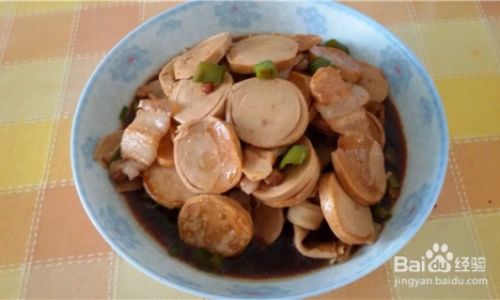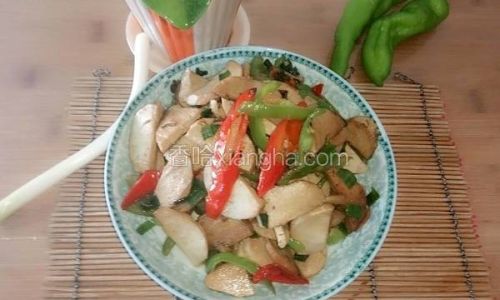Table of content
Introduction
Spicy Eight-Treasure Chili, known in Chinese as Baba Lazi, is a vibrant, fiery dish that embodies the bold flavors of Shaanxi provincial cuisine. This iconic condiment-turned-main-course blends eight carefully selected ingredients, each contributing to a symphony of textures and tastes—crunchy, tender, spicy, and savory. Rooted in tradition yet adaptable to modern palates, this dish has transcended regional boundaries to become a beloved staple in households and restaurants across China. Its name, Eight Treasures, references the harmonious combination of proteins, vegetables, and spices, each playing a vital role in creating a balance of heat and depth. This article delves into the intricate details of its ingredients, the alchemy of its preparation, and the cultural tapestry that makes it a culinary treasure.
Historical and Cultural Context
Originating in the heartland of Shaanxi, Spicy Eight-Treasure Chili reflects the region’s agrarian heritage and love for robust, aromatic flavors. Historically, it was a way for farmers to preserve seasonal produce and leftover meats, transforming them into a versatile dish that could be enjoyed year-round. The number eight holds symbolic significance in Chinese culture, representing prosperity and completeness, which aligns with the dish’s status as a festive or celebratory meal. Today, it is often served during family gatherings, Lunar New Year feasts, or as a comforting accompaniment to steamed buns (mantou) or rice.

The Eight Essential Ingredients
The dish’s name hints at its core components, though variations exist depending on regional preferences and seasonal availability. Below is a breakdown of the classic ingredients, each chosen for its unique contribution to flavor, texture, and aroma.
Protein Base: The Foundation of Flavor
- Pork Belly (or Beef): Fatty, marbled pork belly is the traditional choice, providing richness and a melt-in-the-mouth texture. When rendered slowly, it releases pork fat that coats the other ingredients, enhancing their flavors. For a leaner option, ground beef or diced chicken thighs can be substituted.
- Fermented Tofu (Furu): A pungent, salty-fermented bean curd, this ingredient adds umami depth and a subtle tanginess. It is often mashed and mixed into the dish during the final stages of cooking.
Vegetables: Crunch and Freshness
- Carrots: Diced carrots contribute sweetness and a crisp texture that contrasts with the softened meats.
- Lotus Root (Lian Ou): Sliced lotus root adds a refreshing crunch and a mild, starchy sweetness.
- Bamboo Shoots: Canned or fresh bamboo shoots introduce a delicate, earthy flavor and a satisfying chew.
Aromatics: The Fragrant Backbone
- Garlic and Ginger: Freshly minced, these aromatics form the dish’s aromatic base, tempering the heat and adding warmth.
- Scallions: Both the white and green parts are used—the whites sautéed for mild onion flavor, the greens added at the end for a fresh hit.
Spices and Seasonings: The Fiery Soul
- Dried Chili Peppers: Whole or crushed, these provide the dish’s signature heat. Varieties like Chaotian Jiao or Erjingtiao are preferred for their moderate spiciness and vibrant red hue.
- Sichuan Peppercorns (Huajiao): Toasted and ground, these add a numbing, citrusy note that elevates the dish’s complexity.
- Broad Bean Chili Paste (Doubanjiang): A fermented paste made from broad beans and chili peppers, it imparts a salty, spicy, and slightly funky flavor.
Thickening and Binding Agents
- Starch (Cornstarch or Potato Starch): A slurry made from starch and water thickens the sauce, ensuring it clings to the ingredients.
- Sesame Oil: A drizzle at the end adds nutty richness and a glossy finish.
Optional Enhancements
- Peanuts or Cashews: Toasted nuts add crunch and a buttery contrast.
- Dried Shrimp: For a briny, oceanic undertone.
- Black Fungus (Mu’er): Rehydrated and sliced, it contributes a gelatinous texture.
The Art of Preparation: Step-by-Step Guide
Crafting Spicy Eight-Treasure Chili is a labor of love, requiring precision and patience. Below is a detailed breakdown of the process.

Mise en Place: Preparing the Ingredients
- Dice the Protein: Cut pork belly or beef into small, uniform cubes (about ½-inch). For vegetarian versions, use textured vegetable protein (TVP) or diced mushrooms.
- Chop Vegetables: Finely dice carrots, lotus root, and bamboo shoots into pieces roughly the same size as the meat.
- Prepare Aromatics: Mince garlic and ginger. Slice scallions, separating whites and greens.
- Toast Spices: Dry-toast Sichuan peppercorns in a pan until fragrant, then grind them coarsely.
Cooking the Dish
- Render the Fat: Heat a wok or heavy-bottomed pan over medium heat. Add the pork belly and cook until golden and crispy, rendering its fat. Remove the meat, leaving the fat in the pan.
- Sauté Aromatics: Add garlic, ginger, and scallion whites to the fat. Stir-fry until fragrant but not browned.
- Toast Chilies and Spices: Introduce dried chilies and ground Sichuan peppercorns. Toast briefly to release their oils.
- Add Vegetables: Toss in carrots, lotus root, and bamboo shoots. Stir-fry until slightly softened.
- Incorporate Protein: Return the cooked pork belly to the pan. Stir in broad bean chili paste and fermented tofu, mixing thoroughly.
- Simmer and Thicken: Pour in a splash of water or stock, then add the starch slurry. Simmer gently until the sauce thickens and coats the ingredients.
- Finish with Flavor: Drizzle with sesame oil and toss in scallion greens. Adjust seasoning with salt or sugar if needed.
Serving Suggestions
- Traditional Pairing: Serve hot with steamed mantou, rice, or hand-pulled noodles (biang biang mian).
- Modern Twists: Use as a filling for lettuce wraps, a topping for grilled meats, or a dip for spring rolls.
Regional Variations and Modern Adaptations
While the classic recipe remains revered, creative cooks have embraced innovations:
- Vegetarian/Vegan Versions: Substitute meat with mushrooms, tofu, or jackfruit. Use miso paste instead of fermented tofu.
- Spice Level Adjustments: Reduce chili peppers for mildness or add fresh bird’s-eye chilies for extra heat.
- Sweet and Savory Balance: Some recipes incorporate a touch of honey or brown sugar to mellow the spice.
Health and Nutritional Considerations
Despite its indulgent reputation, Spicy Eight-Treasure Chili can be nutritious when balanced:

- Protein and Fiber: Lean meats and vegetables provide essential nutrients.
- Moderation: Use portion control to manage sodium and fat content from chili paste and pork fat.
- Gluten-Free Options: Substitute soy sauce with tamari and ensure starch is gluten-free.
Common Mistakes and Expert Tips
- Overcooking Vegetables: Sauté until al dente to retain crunch.
- Insufficient Spice Toasting: Dry-toast peppercorns and chilies to unlock their essential oils.
- Rushing the Simmer: Low and slow cooking meld flavors without burning.
Conclusion
Spicy Eight-Treasure Chili is more than a dish—it is a testament to the art of balance and the joy of shared meals. Its eight ingredients, each a treasure in its own right, come together in a fiery embrace that delights the senses and nourishes the soul. Whether prepared by a seasoned chef or a home cook, this dish invites creativity while honoring tradition. So, gather your ingredients, ignite your wok, and embark on a culinary adventure that spans centuries and continents. After all, in the world of Baba Lazi, every bite is a celebration of flavor, history, and the simple pleasure of good food.






0 comments